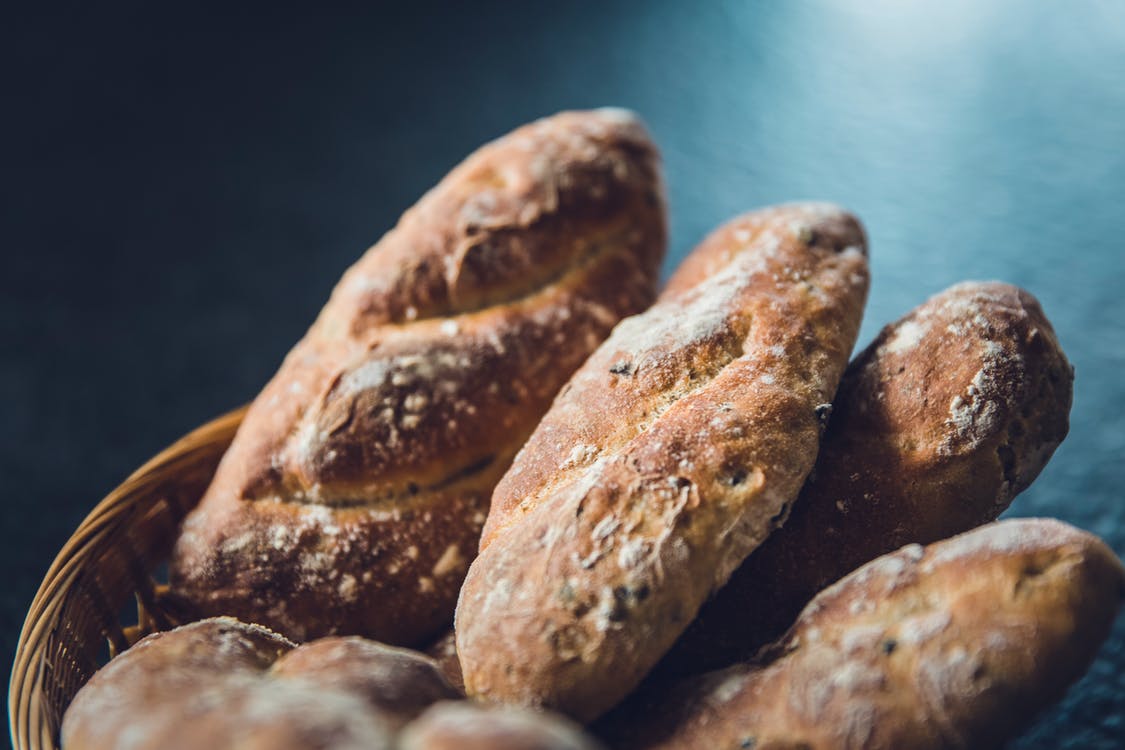Setting a Beautiful Table: Hospitality at the Lord's Supper

God has blessed my family with a variety of gifts and passions. While my wife is passionate about cooking, my mother is passionate about setting a beautiful table, and I am passionate about eating and cleaning the dishes. My daughter and my mother now work together to set a beautiful table. Depending on the season and occasion, a variety of dishes, napkins, silverware, and other unique touches are used. For special occasions, everyone receives a placeholder with his or her name on it.
Not only is the beauty of the set table part of the fun, but seeing your name at a place reminds us to celebrate how each person belongs and is welcome. A beautifully set table along with wonderful food facilitates an encounter of hospitality, love, and laughter.
Setting the Lord’s Table is also key to the celebration in our communal worship.1 Two passages that illuminate a proper setting of the Table are 1 Corinthians 11:17—34 and John 21: 1-14. In the 1 Corinthians passage, things are not going well. Paul’s love and passion for the church include strong rebukes and warnings.
Unfortunately, part of their failed Table practices revolved around the Lord’s Table. The essential problem with their setting of the Table was that some were beginning to eat so much that by the time others (maybe the poor) arrived, there was not enough food left. One of the key verses in this passage that has been used in many unhealthy ways is Paul’s admonition that persons should not participate in the Lord’s Supper “unworthily.”
Biblical Perspective
Unfortunately, some have interpreted this to mean that only those without sin should partake. More will be said about this below, but this is not what Paul was addressing here. John Wesley was very clear that persons should not fear partaking if they feel unworthy, but rather they should fear not partaking, if the Lord provides the opportunity for them to do so.2
John 21 offers many similarities to the calling of the disciples in Mark 1. In John 21, the disciples are in a state of stupor. They have seen the resurrected Jesus on two previous occasions, but something still is not complete. Peter returns to what he knows: catching fish. He takes several disciples out, and they catch nothing. A stranger on the shore asks about their catch, and then encourages them to cast the nets on the other side of the boat. When they do so, the catch is so full that they cannot haul in all the fish.
This bountiful catch allows scales to fall from the disciples’ eyes. They realize this stranger on the shore is Jesus. Peter, in his enthusiasm, immediately gets up and jumps into the water to go to Jesus.
The rest of the disciples finish hauling in the fish, but as they come to the shore, they find that Jesus had already set the table: “When they landed, they saw a fire there, with fish on it, and some bread. Jesus said to them, ‘Bring some of the fish that you have just caught’” (John 9-10, CEB).
It is noteworthy that Jesus had already prepared the fire and had both fish and bread ready, yet He also allowed the disciples to participate with the fish they had caught. Of course, the fish they had caught were from the provision of God. This meal becomes the occasion for Peter’s healing and renewal with Christ after his three denials on the night Jesus was betrayed.
So, what can these passages teach us about setting well the Lord’s Table?
First, this is the Lord’s Table. Christ is the host, and we are the guests.
Though we are unworthy to participate on our own, God’s grace and hospitality invites us to be present and to bring our offerings and gifts as part of the meal.
Paul’s words help us in regard to “setting the Table.” Paul admonishes us, for instance, to set a Table of hospitality, wherein we welcome all who are hungry and thirsty. One’s place at the Table is not dictated by rank or status.
Other Historical and Theological Considerations at the Table
When in the service should we eat?
Historically, the Church has established a beautiful rhythm of Word and Table. The Church first encounters and responds to God through Scripture, song, sermon, prayer (i.e., praise, confession, and intercession), offerings, and creeds. This is often designated as the service of the Word. At this point, it is also crucial to note the significance of the offerings taken. In the spirit of Romans 12, the church presents its offerings as its own living sacrifice in thanksgiving to God. These offerings are like the disciples’ fish used at breakfast.
Following the service of the Word, the church moves to the service of the Table, often beginning with the passing of the peace and then the celebration of the Lord’s Supper. Following Christian worship practice, it seems best to eat at the Lord’s Supper after the service of the Word.
Who is invited and welcomed?
In many settings, only those who are baptized are allowed at the Table. For some groups, the Table is only for those baptized into their own tradition. However, John Wesley believed that the Lord’s Supper could be the very occasion of one’s conversion (a converting ordinance).3 In light of this, many believe that the Lord’s Supper should be opened to all who are seeking grace and healing from God.
For those in the Wesleyan tradition, here is a suggested invitation as part of a proper setting of the Table: “The Lord’s Supper in an ordinary sense is a meal for the baptized as a means of their ongoing growth and healing in sanctifying grace. All those who are baptized, we invite you to come and renew your baptismal covenant. However, for those who are not baptized, but who are hungry and thirsty for God, we also welcome you to the Table in an extra-ordinary sense, as Christ invites all who desire to confess their sins and receive the healing of salvation today.”
Such an invitation honors tradition while rightly celebrating that the Lord’s Table should be open to all who are seeking God’s grace. Of course, we should encourage anyone who is not baptized and who desires to partake to begin the journey toward baptism.
As mentioned previously, it is also crucial that we properly help people understand the 1 Corinthians passage. In talking with Nazarenes from around the world, it is shocking how often this passage has been used to discourage people from participation if they had any sin in their lives. The Lord’s Supper is a means of grace and is precisely to be an occasion for forgiveness, reconciliation, and healing from the destructive and addictive power of sin.
Who can preside and serve?
While John Wesley and the larger Christian tradition is clear that only the ordained should pray over and consecrate the elements, it is a fitting Christian practice that any member of the congregation can serve the elements.
In our worship service in College Church in Nampa, Idaho, we often have children serving the bread and cup to the congregation. This is beyond just being cute. Rather, it is an intentional statement that all persons are equal members of the body of Christ.
Where and how should this take place in the sanctuary?
Every local congregation has a unique physical space. Serving by intinction – dipping the bread into the shared cup – is a powerful symbol. As congregants come to the altar, they are physically coming forward and offering themselves to God. Moreover, as they come forward with their hands cupped, the minister can place the bread in their hands and affirm, “This is the body of Christ broken for you.”
It is crucial to note we do not take Communion, but we receive Communion through the ministry of the Church and by the power of the Spirit.
Participants can then dip the bread into the cup and hear the minister proclaim, “The blood of Christ poured out for your salvation. Know God loves and forgives you today.”
Those who cannot physically come to the altar must have ministers sent to their seats. The church has a responsibility to offer the sacrament to the homebound as well. As Paul reminds us in 1 Corinthians, when someone cannot physically come to the Body, the Body is commanded to be present to them.
Receiving by trays in pews also can serve as a powerful symbol when we all take the bread and cup together, recognizing our unity in Christ.
How are we sent out in mission?
As was true for blind Bartamaeus and the disciples on the Emmaus road, after we have encountered and been transformed by God, united as the body of Christ, we are then sent out by the Spirit to be Christ’s body and blood in the world. We are evangelists who share the gift of hope in the midst of life’s circumstances.
Setting the Table of Grace
The Father, by the power of the Spirit, invites Christians to encounter Christ at the Lord’s Table. As the Church, we are invited to faithfully set this Table with generous hospitality and care. The setting of the Lord’s Table is not an empty ritual. It is a faithful, obedient, and hospitable preparation for receiving God’s grace. So, let us set the Lord’s Table well: a Table of grace and hospitality, where we encounter the Triune God.
Brent Peterson is the dean of the department of religion and Christian ministry at Northwest Nazarene University and author of Created to Worship: God’s Invitation to Become Fully Human.
1. I will often refer to the Lord’s Table in this article, but by this I am also referring to the sacramental meal also known as Communion, Lord’s Supper, and Eucharist.
2. See John Wesley’s sermon 101, “The Duty of Constant Communion” §II.9.
3. This question is a bit anachronistic for John Wesley since most all persons were baptized as infants into the Church of England in Wesley’s day.
Holiness Today, November/December 2017
Please note: This article was originally published in 2017. All facts, figures, and titles were accurate to the best of our knowledge at that time but may have since changed.




